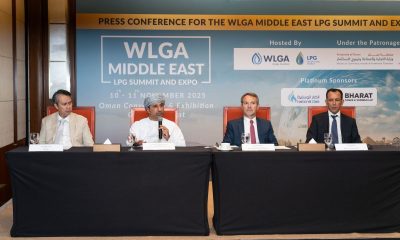Progress Oman
Enhancing productivity
The government has chalked out various agriculture and fisheries development plans worth multi-million Omani rials.

The agriculture and fisheries sectors are gaining importance in Oman in view of the fact that one-third of the country’s population is engaged in these two traditional fields for their livelihood. In a move to further develop the agricultural sector, Oman government plans to establish three separate agencies to support farmers across the country. All these agencies, which are being established with socio-economic objectives, are jointly promoted by the Ministry of Agriculture and Fisheries and Oman Food Investment Holding Company (OFIC) – a new entity established by the government to invest in food security projects that focus on import substitution and rural development.
All-round effort
The first company is a date processing agency, aimed at improving production of Omani dates, enhancing quality and increasing exports. The Sultanate has eight million date palm trees and the government has decided to improve production of dates to international standards, enhance exports and compete with other producers. The second state-run agency will be a commercial company supported by the government for marketing vegetables and fruits, similar to the erstwhile Public Authority for Marketing Agricultural Produce (Pamap). As per the plan, the company will set up procurement centres in select wilayats for packing and grading agricultural products. Oman’s agricultural season is between December and April and during the period, the country produces several agricultural products like tomato and cucumber.
The third project, which is to support livestock farmers in Dhofar region, is another socio-economic venture. The government wants to support livestock farmers in Dhofar. As much as 70 per cent of livestock (300,000 animals) in Oman are in Dhofar region. As per the plan, there will be six collection centres, mostly in rural and mountainous regions, for procuring milk of both cow and camel. Besides, there is a plan for a milk processing plant in Salalah with a capacity to process 90,000 tonnes of milk per annum.
Ever since the launch of the Blessed Renaissance in early 1970s, several schemes for farmers have been introduced for providing financial support, subsidised fertilisers, subsidy, and enhancing irrigation and marketing support for agricultural products.
Supportive measures
In a move to support farmers, the Ministry of Agriculture and Fisheries last year reduced the price of urea to RO5.9 per 50kg bag from RO8 in the local market, which was done in cooperation with Oman India Fertiliser Company. Oman needs 30,000 tonnes of Urea per annum. Of late, the Ministry of Agriculture and Fisheries is taking additional measures to bring more area under cultivation of high-yielding varieties of crops suitable for different regions. The ministry’s efforts on strengthening irrigation facilities have already resulted in extending land under cultivation. However, shortage of water in several places still poses a challenge for farmers in several parts of the country.
The total area of agricultural land in Oman is estimated at 136,134 hectares, and about 44.2 per cent of which is under cultivation. The Sultanate’s main agricultural hub is centred around Batinah and Dhofar regions due to its water availability and climatic condition suitable for farming. Batinah region is home to many of the country’s farms and orchards, while the Dhofar region gets rainfall for farming. The Sultanate’s agricultural production includes dates, fodder crop, tomato, vegetable, sugar cane, wheat, barley, banana, watermelon and mango.
Several companies, including Tawoos Agricultural Systems and Gulf Mushrooms, are active in the country’s farm sector. Fresh vegetables are exported to several countries in the Gulf, Europe and to Japan. The Government’s total investment in the agricultural sector for the five-year period (2011-2015) is envisaged at RO63.3 million, RO13.3 million of which has been allocated to the implementation of new technologies and plans to attract agricultural investment in the country. The state-owned Oman Development Bank (ODB) has been playing an important role in providing financial support to farmers. The bank offers loans up to 70 per cent of the operating cost per acre with a payment period of maximum nine months at an interest rate of three per cent along with government subsidy of six per cent.
Fisheries sector
The ministry has also devised a major plan for the comprehensive development of fisheries sector. Now the authorities are implementing an integrated scheme to develop the fisheries sector in the next six years for enhancing its contribution to the economy. The comprehensive development programme includes a massive fleet expansion, financial support and training for fishermen, additional harbours, focus on state-of-the-art fish marketing centres to ensure better prices for the catch, aquaculture development and to attract private investment. The aim is to raise fish production to 500,000 tonnes by 2020 from 206,000 tonnes in 2014 and to create additional jobs for unemployed youth.
Once the development programmes are implemented, the direct contribution of fisheries sector will be RO396.6 million, while indirect return on these investments will touch RO739.2 million by 2020. Last year, the contribution of fisheries sector to gross domestic product was $415 million and 40,000 Omani fishermen were engaged in fishing activity. The country produced 206,000 tonnes of fish last year, which shows a 31 per cent growth compared to three years ago. Two private firms are in the process of setting up fish farming projects worth RO66 million. The first one is Arabia Marine Development Company, which is setting up shrimp farming project at Qaroon village in South Al Sharqiyah over 500 hectares at a cost of about RO29 million.
The second project is being developed by Al Jazeera Investment Company to produce abalone and grouper fish in the Wilayat of Shaleem and Al Halaniyat Islands in the Governorate of Dhofar at a cost of RO34.5 million. The Sultanate has around 20,087 fishing vessels – 19,245 small fishing boats, 698 traditional fishing vessel, 130 coastal fishing vessels and 14 commercial fishing vessels. Major development plans have already been started to have several fishing harbours, which will eventually enable Oman to tap its great potential in fisheries sector. Development plans are also on to take the total number of harbours and ports to 33 from 21 now.

-

 Magazines1 month ago
Magazines1 month agoOER – September 2025 Issue
-

 News1 month ago
News1 month agoKitchenomiKs Secures Investment of US$3.2M Led by Jasoor Ventures
-

 Alamaliktistaad Magazines1 month ago
Alamaliktistaad Magazines1 month agoAlam Al Iktisaad – September 2025 Edition
-

 News1 month ago
News1 month agoCent Capital, AI Finance App by ex-AWS Strategist ‘The Beast of Bay Area,’ Launches to End Financial Anxiety, Hits $1M AUM
-

 News1 month ago
News1 month agoOman Inaugurates ‘Hadatha’ – Its All-New Cybersecurity Center
-

 News1 month ago
News1 month agoIEA Expects Global Oil Market to Remain Oversupplied in 2026
-

 Energy1 month ago
Energy1 month agoWLGA Middle East LPG Summit & Expo 2025 to be held at OCEC on November 10 and 11
-

 Banking & Finance1 month ago
Banking & Finance1 month agoOman Arab Bank Highlights Its Ongoing Strategic Initiatives and Future Plans






























You must be logged in to post a comment Login